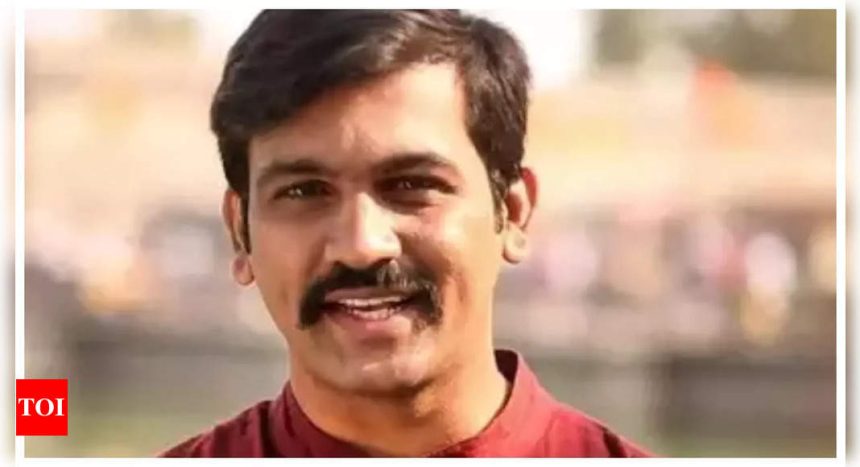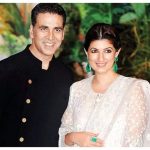Dive into the enchanting world of historical and mythological filmmaking as we sit down with writer and director Digpal Lanjekar for an exclusive interview. From his passion for delving into timeless narratives to the intricate balance between historical accuracy and cinematic storytelling, discover the secrets behind bringing epic tales to life on the silver screen.Excerpts…
What draws you to explore historical or mythological themes in your work?
I find historical and mythological themes endlessly fascinating because they offer a window into the human experience across different times and cultures. By exploring these themes in my filmmaking, I’m able to delve into universal truths, timeless struggles, and the rich tapestry of human emotions. History and mythology provide a treasure trove of compelling narratives, complex characters, and profound insights into the human condition, which allows me to create stories that resonate deeply with audiences.
But beyond the broader scope, there are personal passions that fuel my creative fire. One such passion is my deep reverence for the history of Chatrapati Shivaji Maharaj and Maratha history. The courage, resilience, and unwavering commitment to justice exhibited by Shivaji Maharaj and his warriors inspire me to no end. Their stories are not just tales of heroism but embodiments of the indomitable human spirit in the face of adversity.
Moreover, I feel a profound responsibility to bring the ancient knowledge and culture of our country to the next generation. Our ancestors left behind a legacy of wisdom, innovation, and cultural richness that deserves to be celebrated and preserved. Through my filmmaking, I strive to illuminate the greatness of our heritage, ensuring that it continues to inspire and educate generations to come.
This is more than a career for me; it’s a life mission. Every project I undertake is infused with a sense of purpose and dedication to honoring the past while shaping the future. I believe that by revisiting and reimagining these stories, we can gain new perspectives on our own lives and the world around us, fostering a greater sense of connection and empathy.
In essence, my filmmaking journey is a deeply emotional one, driven by a love for history, a passion for storytelling, and a commitment to leaving a lasting legacy that honors the greatness of our ancestors and enriches the lives of future generations.
How do you approach the balance between historical accuracy and cinematic storytelling when adapting these narratives?
Balancing historical accuracy with cinematic storytelling is a delicate dance that requires careful consideration. While fidelity to historical events and contexts is important for authenticity, I believe that the essence of storytelling lies in its ability to engage, entertain, and provoke thought.
My approach involves extensive research to understand the historical context, characters, and events, allowing me to capture the spirit of the narrative while respecting its origins. However, I also recognize that film is a medium of artistic interpretation, and certain liberties may need to be taken to enhance the cinematic experience and convey the emotional truth of the story.
I strive to strike a balance where the integrity of the narrative is preserved, while still allowing for creative interpretation and narrative embellishments that serve the overall cinematic vision. Collaboration with historians, cultural consultants, and experts in the field is often invaluable in ensuring accuracy while navigating the demands of storytelling.
Ultimately, my goal is to create a cinematic experience that is both faithful to its historical roots and compelling in its storytelling, inviting audiences to immerse themselves in the world of the narrative while sparking curiosity and appreciation for the past.
What challenges do you face in bringing these epic tales to life on the screen, and how do you overcome them?
Bringing epic tales to life on the screen is a monumental endeavor that presents a myriad of challenges. One of the primary hurdles is the sheer scale and scope of these stories, which often span vast landscapes, involve numerous characters, and unfold over extended periods of time. Maintaining coherence and momentum while staying true to the essence of the narrative requires meticulous planning, coordination, and resource management.
Another challenge is striking the right balance between spectacle and substance. While epic tales are known for their grandeur and visual splendor, it’s crucial to ensure that the spectacle serves the story rather than overshadowing it. This involves careful attention to character development, thematic depth, and emotional resonance to keep audiences invested in the journey unfolding on screen.
Technical challenges also abound, particularly when it comes to capturing epic battles, mythical creatures, or fantastical realms. These require innovative approaches to visual effects, cinematography, and production design to achieve the desired impact while maintaining a sense of realism and authenticity.
To overcome these challenges, I rely on a collaborative approach that brings together a talented team of artists, technicians, and performers who share a passion for the project. Clear communication, creative problem-solving, and a willingness to push the boundaries of storytelling are essential ingredients for success.
Additionally, I embrace the iterative nature of filmmaking, remaining open to feedback, revisions, and unexpected discoveries along the way. Flexibility, adaptability, and a willingness to embrace challenges as opportunities for growth are key to navigating the complex journey of bringing epic tales to life on the screen.
Can you discuss the role of technology and visual effects in enhancing the cinematic experience of historical and mythological films?
The role of technology and visual effects in historical and mythological films cannot be overstated. These tools allow filmmakers to transport audiences to distant lands, ancient civilizations, and fantastical realms with a level of immersion and realism that was once unimaginable. From recreating iconic historical events to bringing mythical creatures to life, technology has revolutionized the cinematic experience, enriching storytelling and expanding the possibilities of visual storytelling.
In historical films, technology enables filmmakers to recreate long-lost worlds with meticulous attention to detail, from the architecture and costumes to the customs and dialects of the time. Visual effects can seamlessly integrate historical landmarks, such as ancient cities or medieval castles, into the narrative, allowing audiences to experience the past in all its grandeur and glory. Moreover, advancements in CGI (computer-generated imagery) enable filmmakers to depict epic battles, natural disasters, and other spectacles on a scale that was previously unimaginable, adding a layer of authenticity and excitement to historical narratives.
In mythological films, technology plays an equally crucial role in bringing ancient myths and legends to life. Visual effects can transform actors into mythical beings, such as gods, monsters, or supernatural creatures, blurring the line between reality and fantasy. By leveraging cutting-edge techniques in motion capture, animation, and CGI, filmmakers can imbue these mythical figures with a sense of awe and wonder, capturing the imagination of audiences and transporting them to mythical realms beyond their wildest dreams.
As for the portrayal of historical or mythological figures, I believe it contributes significantly to the cultural conversation surrounding these stories. By breathing life into iconic characters from history and mythology, filmmakers have the power to shape our collective understanding of the past and its relevance to the present. Whether it’s humanizing legendary heroes and heroines, challenging prevailing narratives, or exploring the complexities of power and morality, these portrayals offer valuable insights into the human condition and the enduring appeal of these timeless tales.
Moreover, by reimagining historical and mythological figures through a contemporary lens, filmmakers can prompt audiences to reconsider their assumptions, question their beliefs, and engage in critical reflection about the world around them. Whether it’s shedding light on overlooked voices and perspectives or reinterpreting familiar stories in bold and innovative ways, these portrayals contribute to a richer, more nuanced understanding of our shared cultural heritage and its enduring relevance to the modern world.
What draws you to explore historical or mythological themes in your work?
I find historical and mythological themes endlessly fascinating because they offer a window into the human experience across different times and cultures. By exploring these themes in my filmmaking, I’m able to delve into universal truths, timeless struggles, and the rich tapestry of human emotions. History and mythology provide a treasure trove of compelling narratives, complex characters, and profound insights into the human condition, which allows me to create stories that resonate deeply with audiences.
But beyond the broader scope, there are personal passions that fuel my creative fire. One such passion is my deep reverence for the history of Chatrapati Shivaji Maharaj and Maratha history. The courage, resilience, and unwavering commitment to justice exhibited by Shivaji Maharaj and his warriors inspire me to no end. Their stories are not just tales of heroism but embodiments of the indomitable human spirit in the face of adversity.
Moreover, I feel a profound responsibility to bring the ancient knowledge and culture of our country to the next generation. Our ancestors left behind a legacy of wisdom, innovation, and cultural richness that deserves to be celebrated and preserved. Through my filmmaking, I strive to illuminate the greatness of our heritage, ensuring that it continues to inspire and educate generations to come.
This is more than a career for me; it’s a life mission. Every project I undertake is infused with a sense of purpose and dedication to honoring the past while shaping the future. I believe that by revisiting and reimagining these stories, we can gain new perspectives on our own lives and the world around us, fostering a greater sense of connection and empathy.
In essence, my filmmaking journey is a deeply emotional one, driven by a love for history, a passion for storytelling, and a commitment to leaving a lasting legacy that honors the greatness of our ancestors and enriches the lives of future generations.
How do you approach the balance between historical accuracy and cinematic storytelling when adapting these narratives?
Balancing historical accuracy with cinematic storytelling is a delicate dance that requires careful consideration. While fidelity to historical events and contexts is important for authenticity, I believe that the essence of storytelling lies in its ability to engage, entertain, and provoke thought.
My approach involves extensive research to understand the historical context, characters, and events, allowing me to capture the spirit of the narrative while respecting its origins. However, I also recognize that film is a medium of artistic interpretation, and certain liberties may need to be taken to enhance the cinematic experience and convey the emotional truth of the story.
I strive to strike a balance where the integrity of the narrative is preserved, while still allowing for creative interpretation and narrative embellishments that serve the overall cinematic vision. Collaboration with historians, cultural consultants, and experts in the field is often invaluable in ensuring accuracy while navigating the demands of storytelling.
Ultimately, my goal is to create a cinematic experience that is both faithful to its historical roots and compelling in its storytelling, inviting audiences to immerse themselves in the world of the narrative while sparking curiosity and appreciation for the past.
What challenges do you face in bringing these epic tales to life on the screen, and how do you overcome them?
Bringing epic tales to life on the screen is a monumental endeavor that presents a myriad of challenges. One of the primary hurdles is the sheer scale and scope of these stories, which often span vast landscapes, involve numerous characters, and unfold over extended periods of time. Maintaining coherence and momentum while staying true to the essence of the narrative requires meticulous planning, coordination, and resource management.
Another challenge is striking the right balance between spectacle and substance. While epic tales are known for their grandeur and visual splendor, it’s crucial to ensure that the spectacle serves the story rather than overshadowing it. This involves careful attention to character development, thematic depth, and emotional resonance to keep audiences invested in the journey unfolding on screen.
Technical challenges also abound, particularly when it comes to capturing epic battles, mythical creatures, or fantastical realms. These require innovative approaches to visual effects, cinematography, and production design to achieve the desired impact while maintaining a sense of realism and authenticity.
To overcome these challenges, I rely on a collaborative approach that brings together a talented team of artists, technicians, and performers who share a passion for the project. Clear communication, creative problem-solving, and a willingness to push the boundaries of storytelling are essential ingredients for success.
Additionally, I embrace the iterative nature of filmmaking, remaining open to feedback, revisions, and unexpected discoveries along the way. Flexibility, adaptability, and a willingness to embrace challenges as opportunities for growth are key to navigating the complex journey of bringing epic tales to life on the screen.
Can you discuss the role of technology and visual effects in enhancing the cinematic experience of historical and mythological films?
The role of technology and visual effects in historical and mythological films cannot be overstated. These tools allow filmmakers to transport audiences to distant lands, ancient civilizations, and fantastical realms with a level of immersion and realism that was once unimaginable. From recreating iconic historical events to bringing mythical creatures to life, technology has revolutionized the cinematic experience, enriching storytelling and expanding the possibilities of visual storytelling.
In historical films, technology enables filmmakers to recreate long-lost worlds with meticulous attention to detail, from the architecture and costumes to the customs and dialects of the time. Visual effects can seamlessly integrate historical landmarks, such as ancient cities or medieval castles, into the narrative, allowing audiences to experience the past in all its grandeur and glory. Moreover, advancements in CGI (computer-generated imagery) enable filmmakers to depict epic battles, natural disasters, and other spectacles on a scale that was previously unimaginable, adding a layer of authenticity and excitement to historical narratives.
In mythological films, technology plays an equally crucial role in bringing ancient myths and legends to life. Visual effects can transform actors into mythical beings, such as gods, monsters, or supernatural creatures, blurring the line between reality and fantasy. By leveraging cutting-edge techniques in motion capture, animation, and CGI, filmmakers can imbue these mythical figures with a sense of awe and wonder, capturing the imagination of audiences and transporting them to mythical realms beyond their wildest dreams.
As for the portrayal of historical or mythological figures, I believe it contributes significantly to the cultural conversation surrounding these stories. By breathing life into iconic characters from history and mythology, filmmakers have the power to shape our collective understanding of the past and its relevance to the present. Whether it’s humanizing legendary heroes and heroines, challenging prevailing narratives, or exploring the complexities of power and morality, these portrayals offer valuable insights into the human condition and the enduring appeal of these timeless tales.
Moreover, by reimagining historical and mythological figures through a contemporary lens, filmmakers can prompt audiences to reconsider their assumptions, question their beliefs, and engage in critical reflection about the world around them. Whether it’s shedding light on overlooked voices and perspectives or reinterpreting familiar stories in bold and innovative ways, these portrayals contribute to a richer, more nuanced understanding of our shared cultural heritage and its enduring relevance to the modern world.










